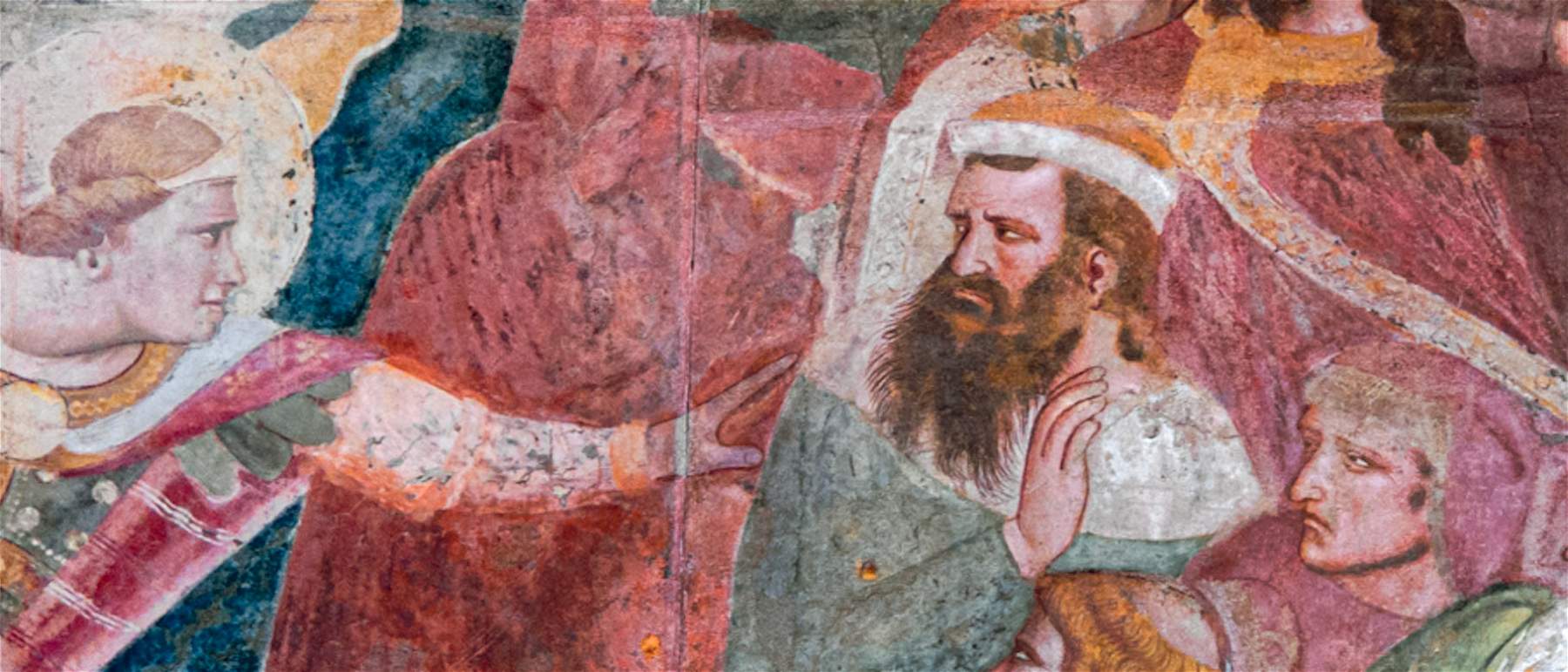Perhaps there is a portrait of Dante Alighieri in the frescoes that Buonamico Buffalmacco (Florence, c. 1290 - 1340) painted on the walls of the Monumental Cemetery in Pisa, and in particular in the scene of the Last Judgment, where there is a man dressed in red who looks very much like the portrait of Dante painted by Giotto in the frescoes of the Cappella del Podestà at the Bargello, which have moreover been recently restored. The hypothesis is by Giulia Ammannati, professor of Paleography at the Scuola Normale Superiore in Pisa.
The alleged Dante is located at the point where the angels push the damned into hell: if it were really him, it would be a work contemporary to Giotto’s portrait (made before 1337), perhaps even earlier. Why, according to Giulia Ammannati, would Buffalmacco have plunged the Supreme Poet himself into hell? The scholar, in her study soon to be published in the journal Annali della Scuola Normale, does not rely only on physiognomic similarities, but traces this hypothesis to the historical-political context of the time, and the bitter contrast that opposed the Papacy and the Empire.
In particular, the archbishop of Pisa Simone Saltarelli, a close collaborator of Pope John XXII, had had to take refuge in Avignon with the pontiff during the years (1327-29) when Pisa was occupied by Ludovic the Bavarian, who also installed his own antipope (Nicholas V) there. In those events the pro-imperialists had drawn juicy arguments from a work by Dante, De Monarchia, soon condemned to the stake by the avignonese pope’s emissaries. Dante’s theorist of the Empire, according to Ammannati, may have been stymied in Buffalmacco’s frescoes, in whose inspiration the Pisan Dominicans and the archbishop himself played a key role. The bearded figure next to him could then be Virgil, banished perhaps also because of his medieval reputation as a magician, an accusation that moreover struck Dante himself in the last years of his life.
What, moreover, did the Pisans know about Dante’s appearance when Buffalmacco was painting in the Camposanto? Saltarelli and Buffalmacco were Florentines and may have seen Dante’s portrait at the Bargello, but Ammannati also adduces the hypothesis, due to Marco Santagata, that Dante had stayed in Pisa for a long time during the years of Arrigo VII (1312-13), composing large parts of precisely De Monarchia there. The preaching of the Dominicans and the oral tradition of commentary on the paintings would have done the rest, making theexemplum of the reprobate Dante recognizable to contemporaries. Dante was also accused of necromancy while he was still alive, and the accusers included Cardinal Bernardo dal Poggetto, nephew and legate of John XXII, who was very hostile to the poet precisely because of the theories expressed in De Monarchia.
Hypotheses certainly all to be verified: could they deliver the image of a Dante other than the one known?
 |
| Is there a portrait of Dante Alighieri in Buffalmacco's frescoes in the Camposanto in Pisa? |
Warning: the translation into English of the original Italian article was created using automatic tools. We undertake to review all articles, but we do not guarantee the total absence of inaccuracies in the translation due to the program. You can find the original by clicking on the ITA button. If you find any mistake,please contact us.